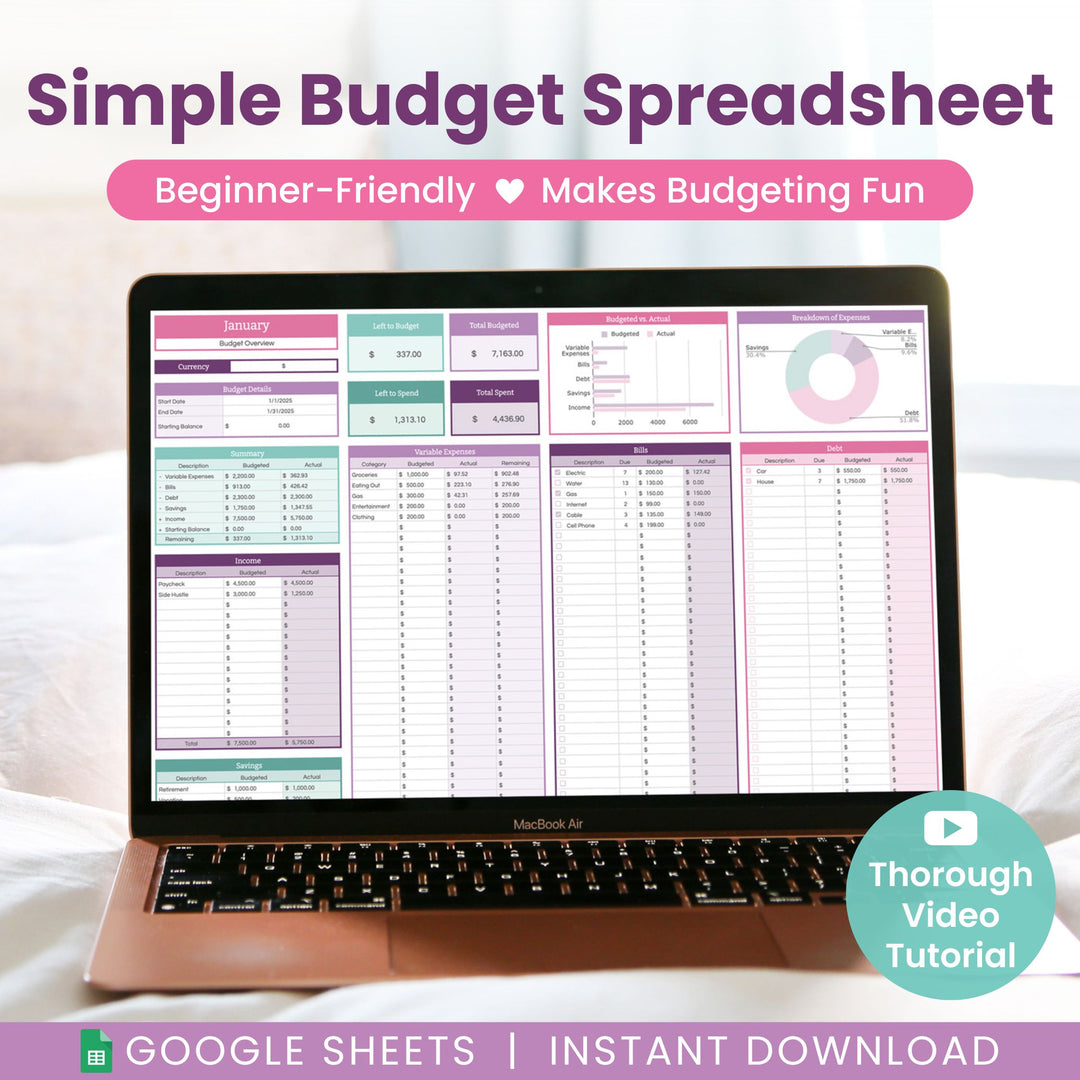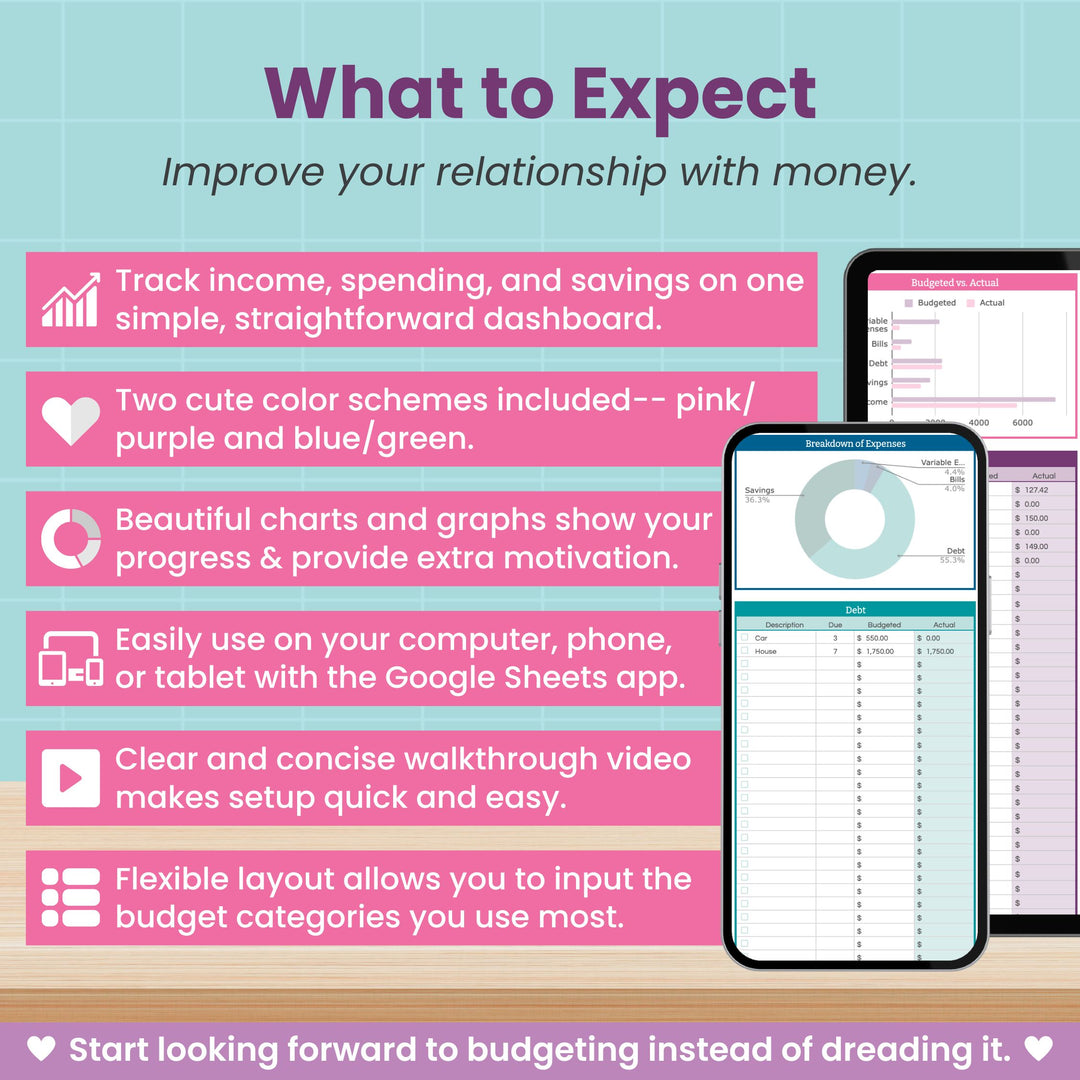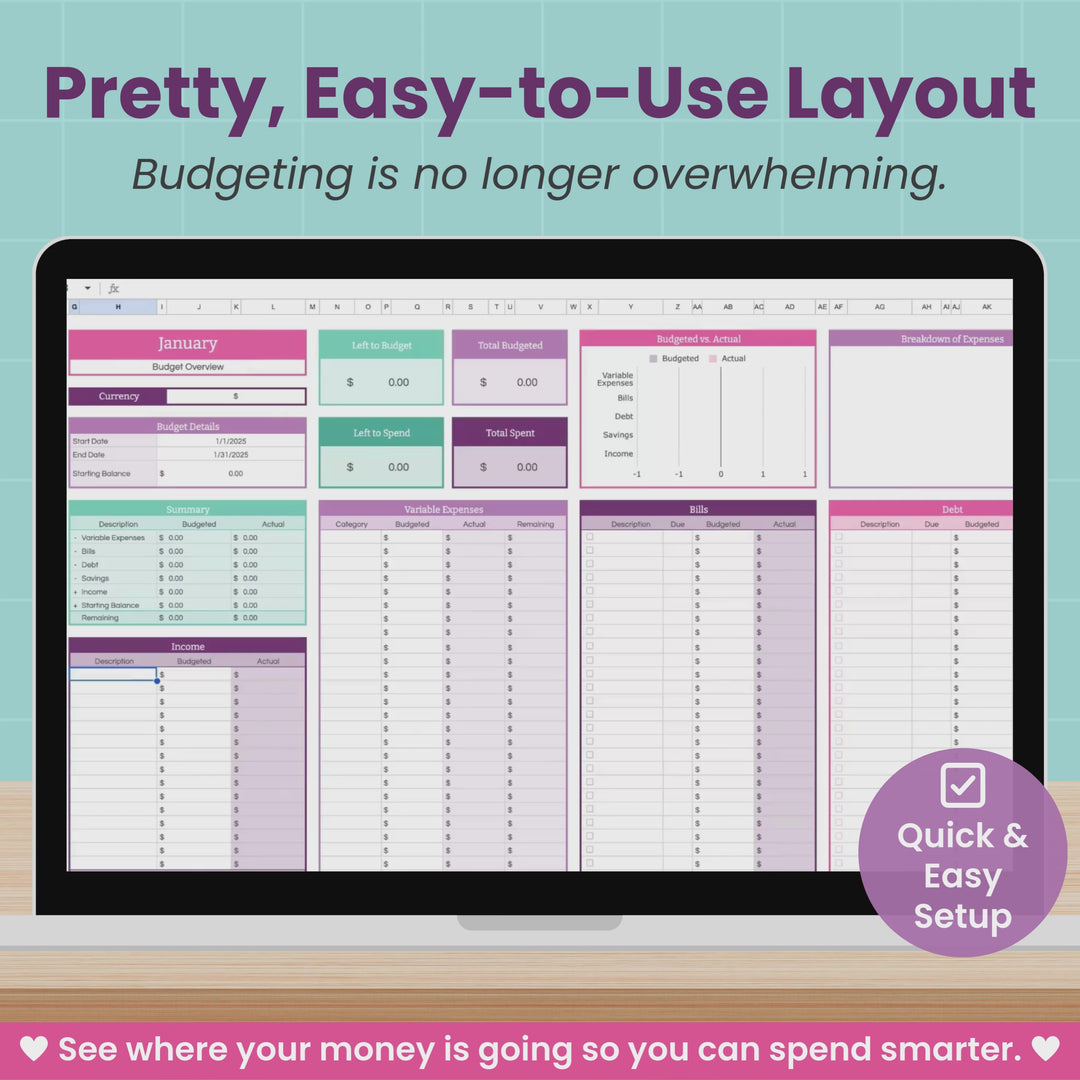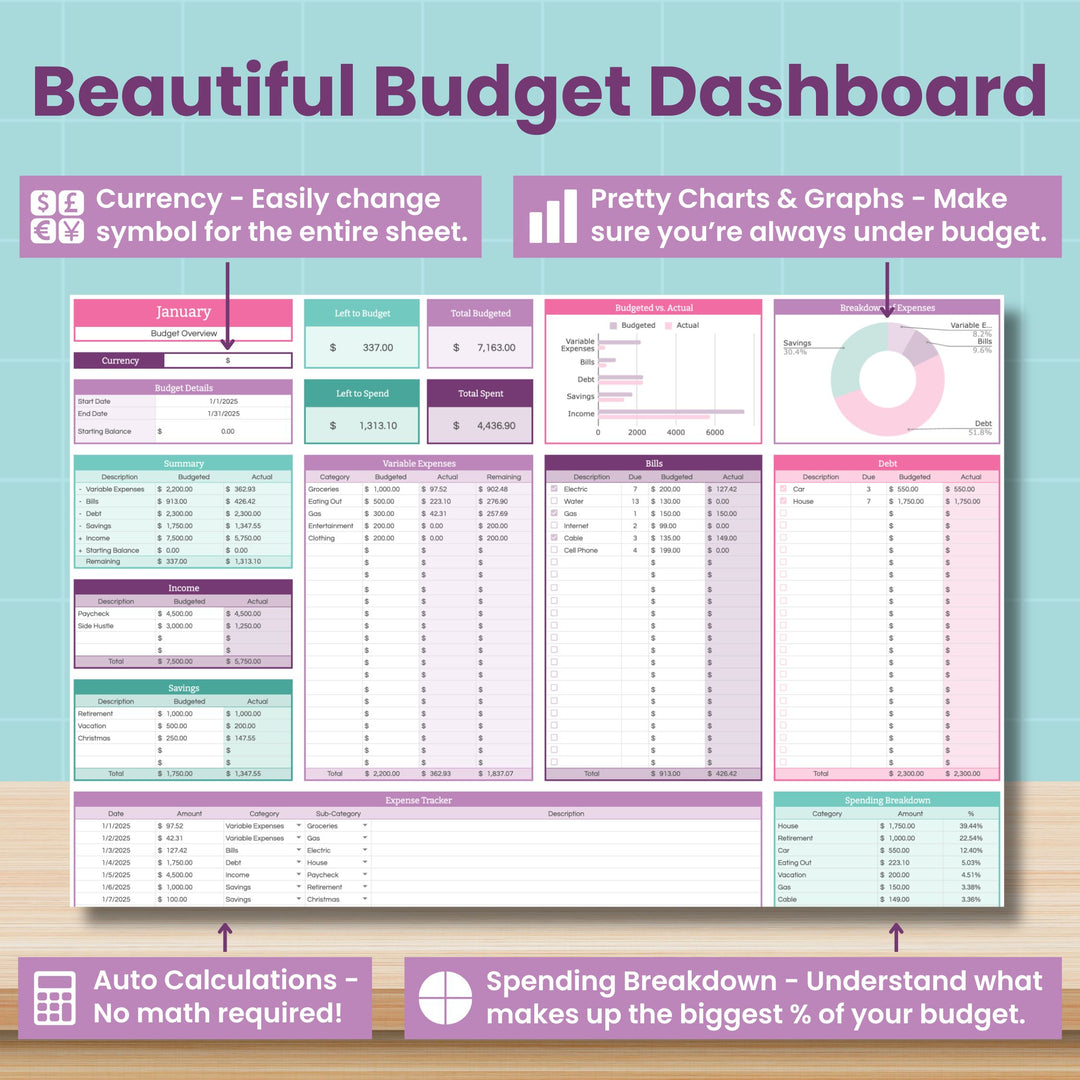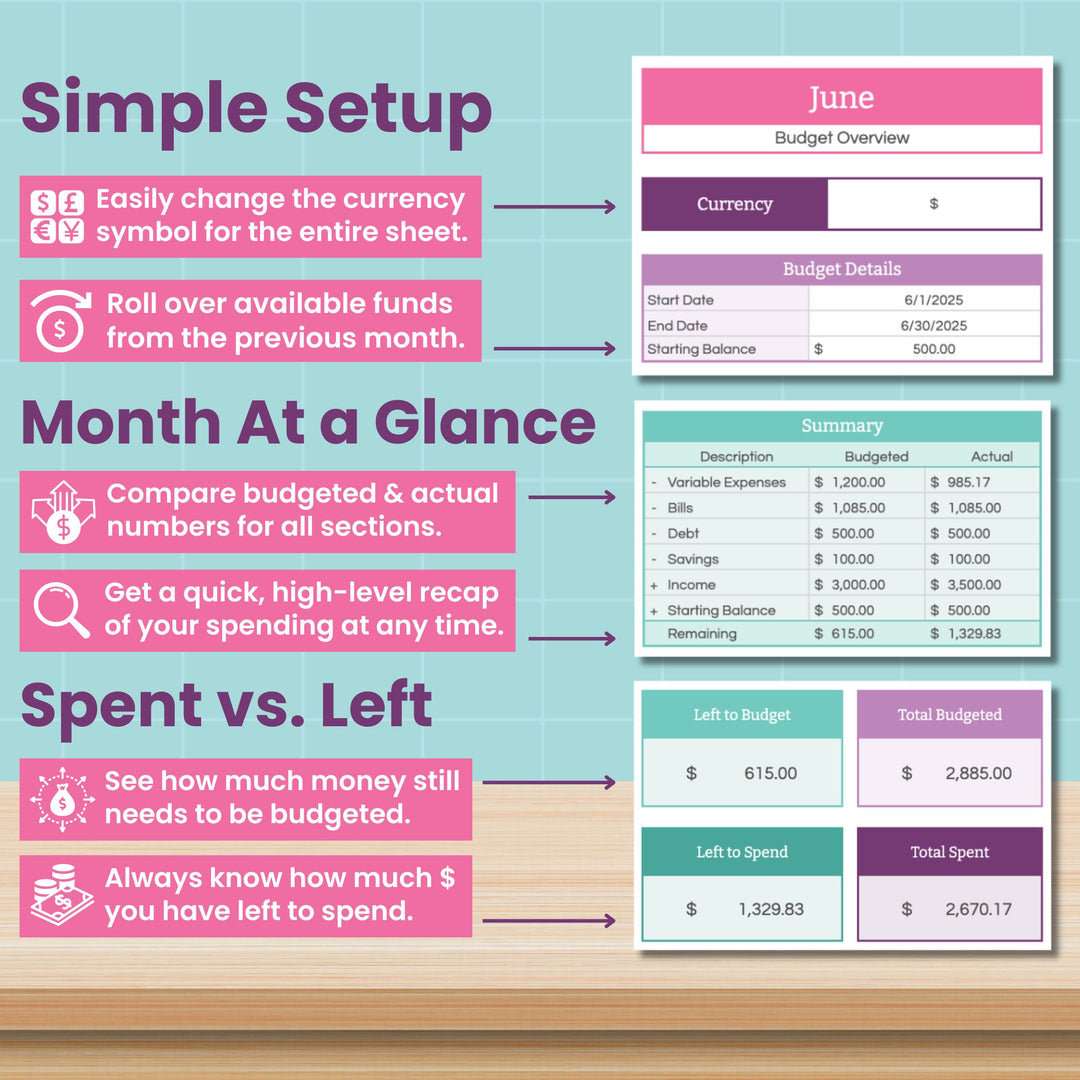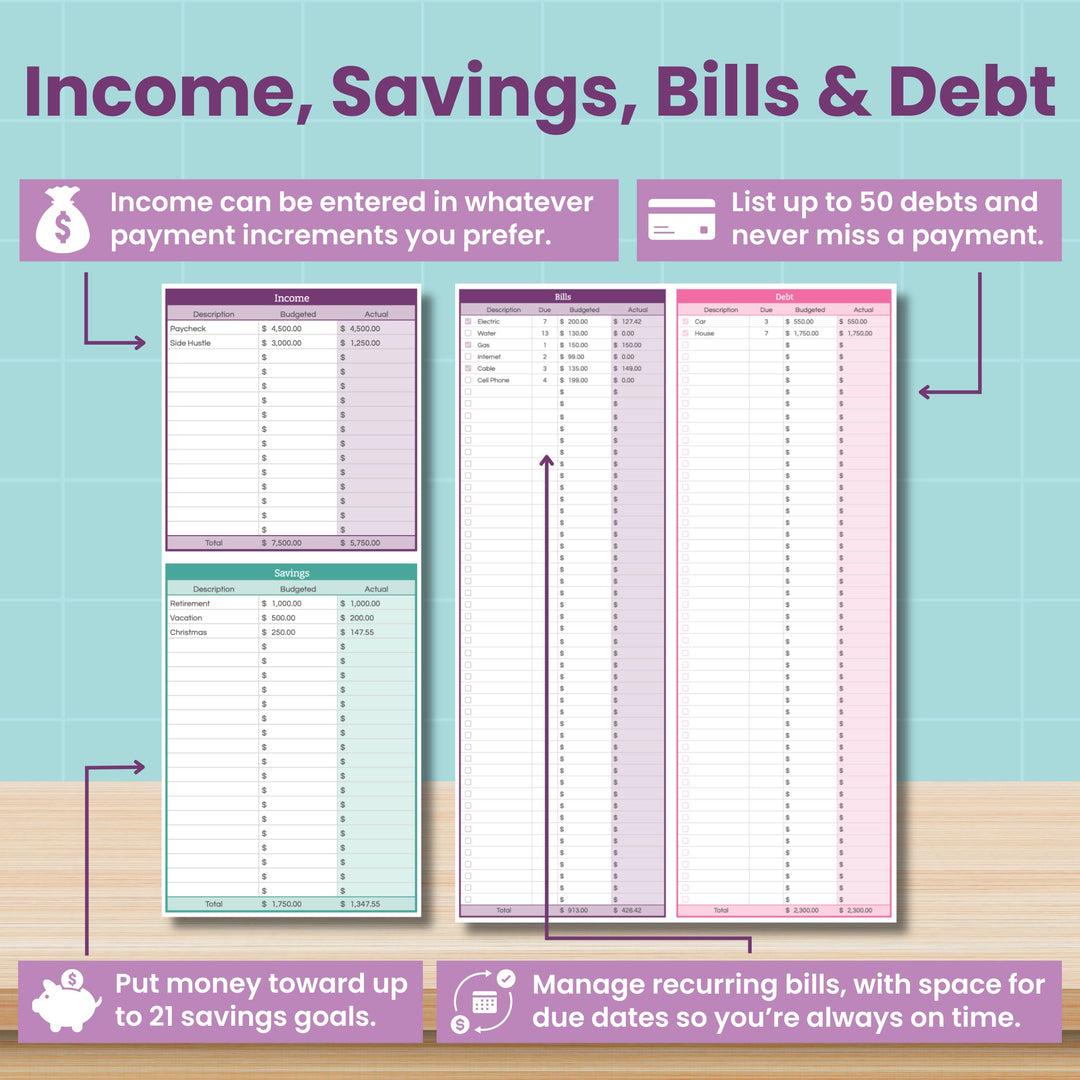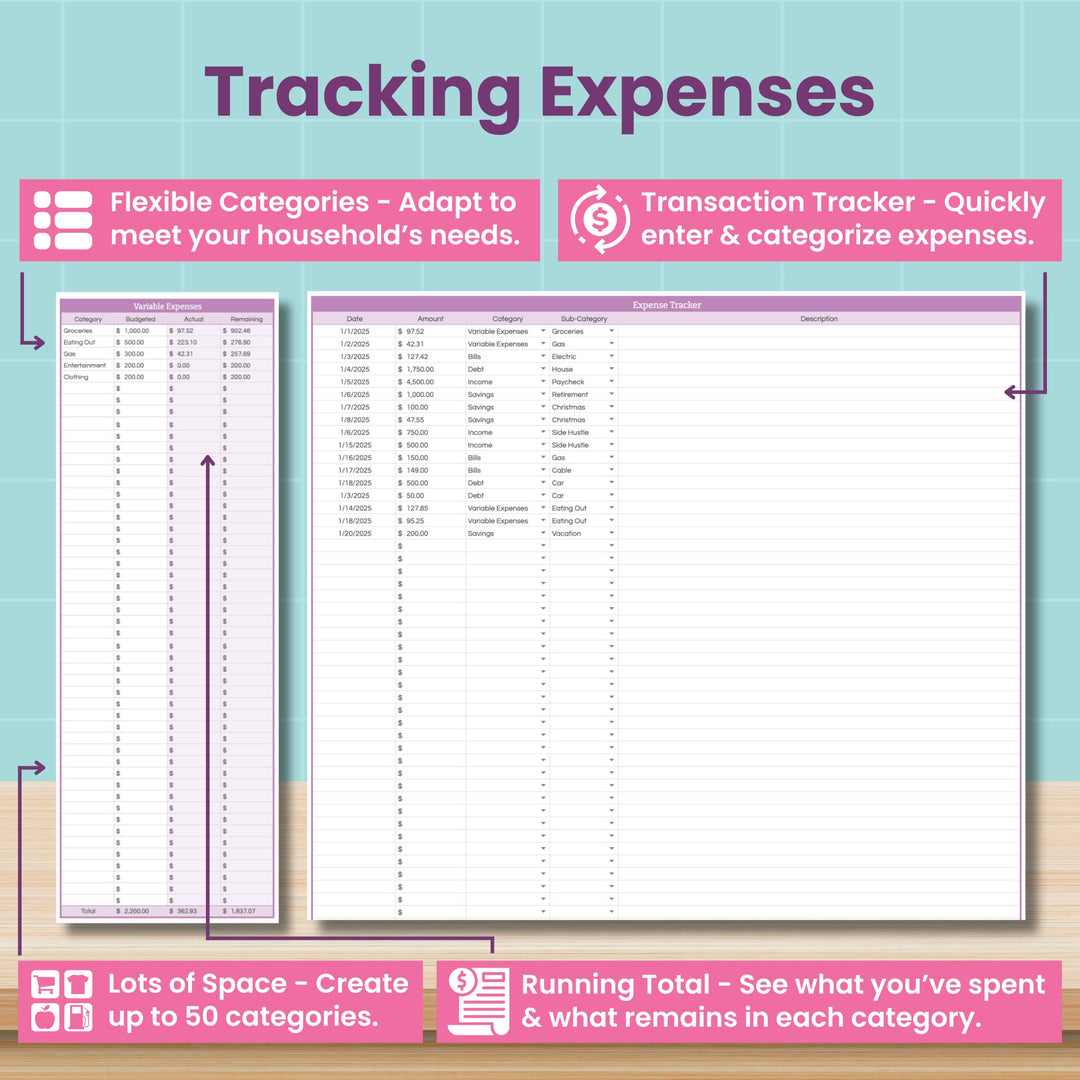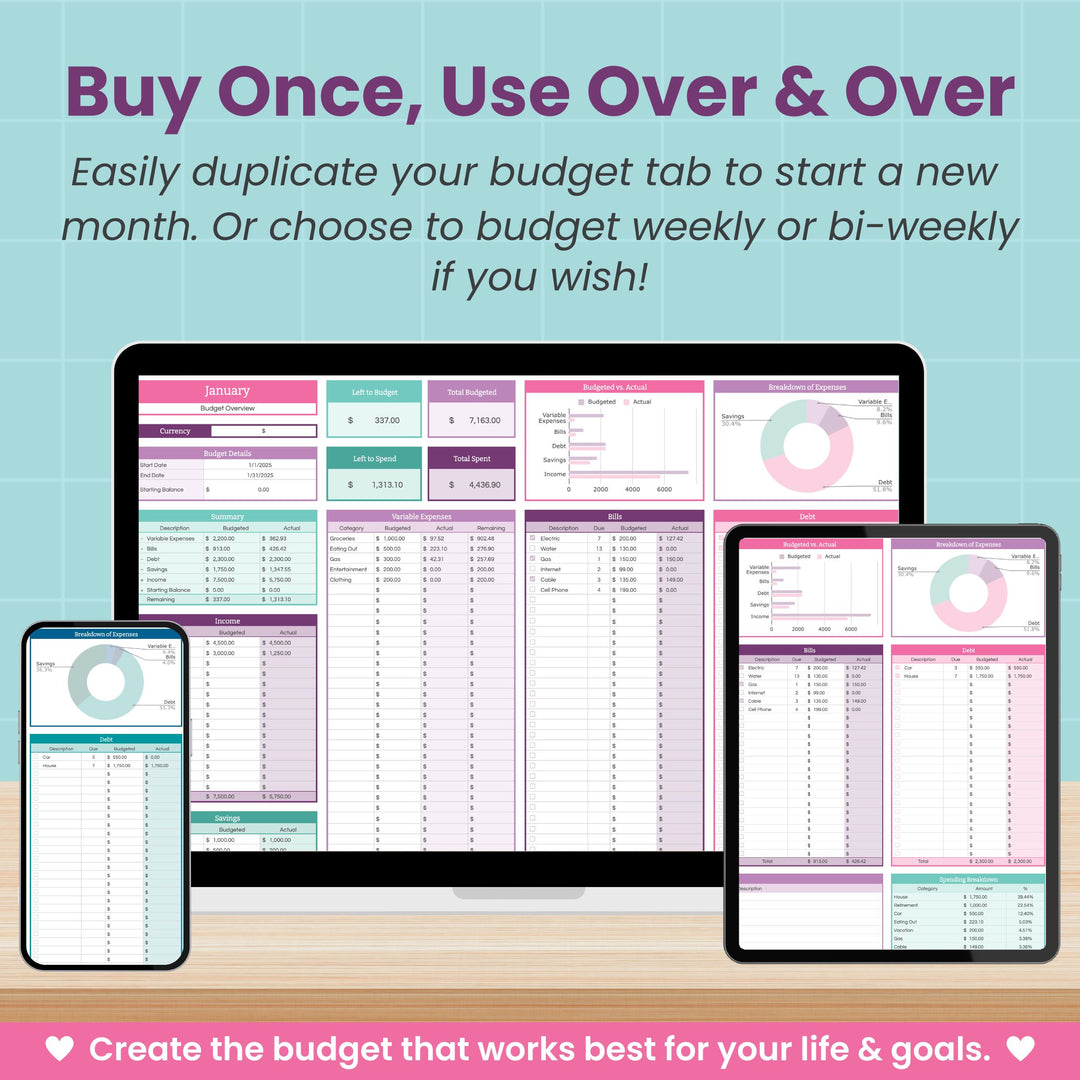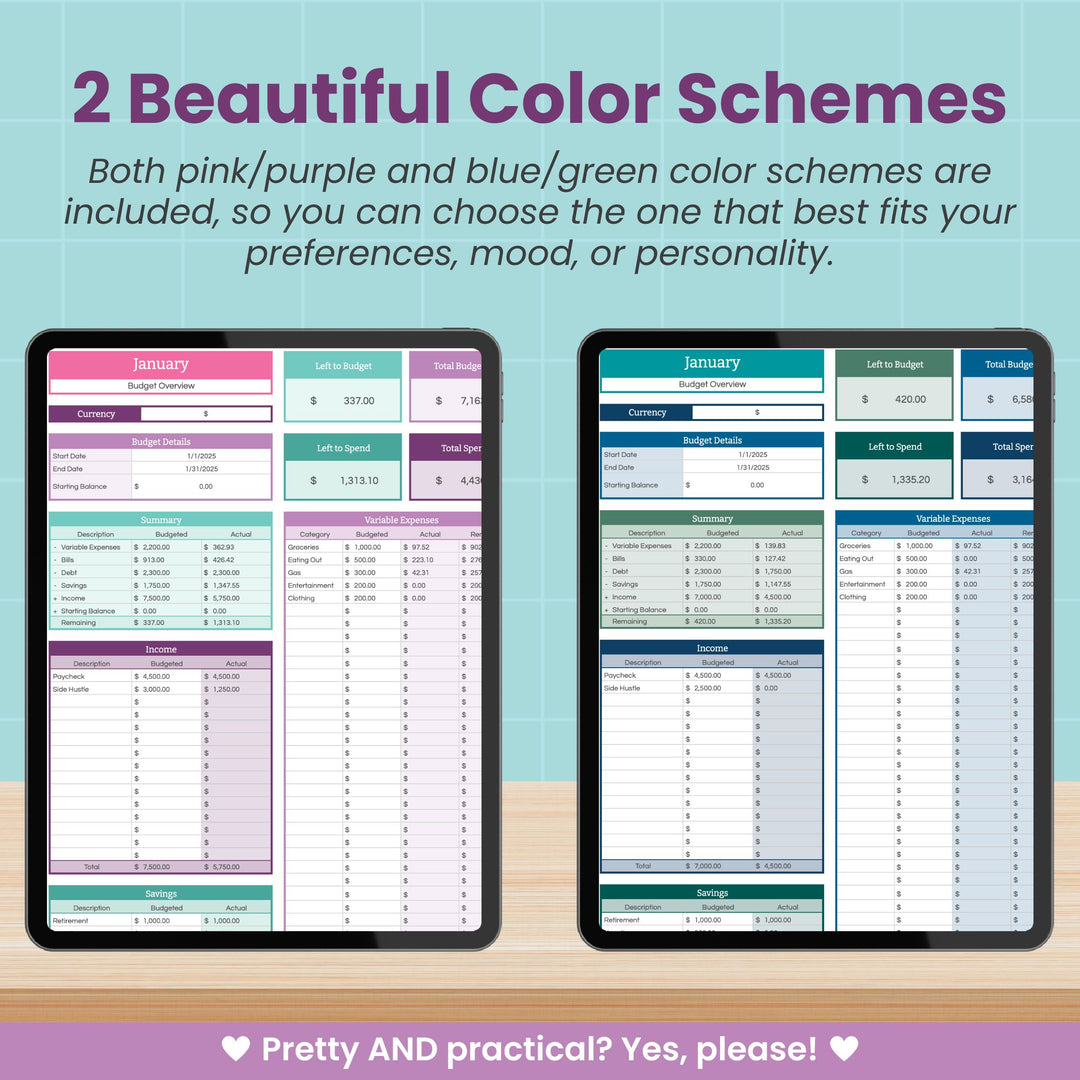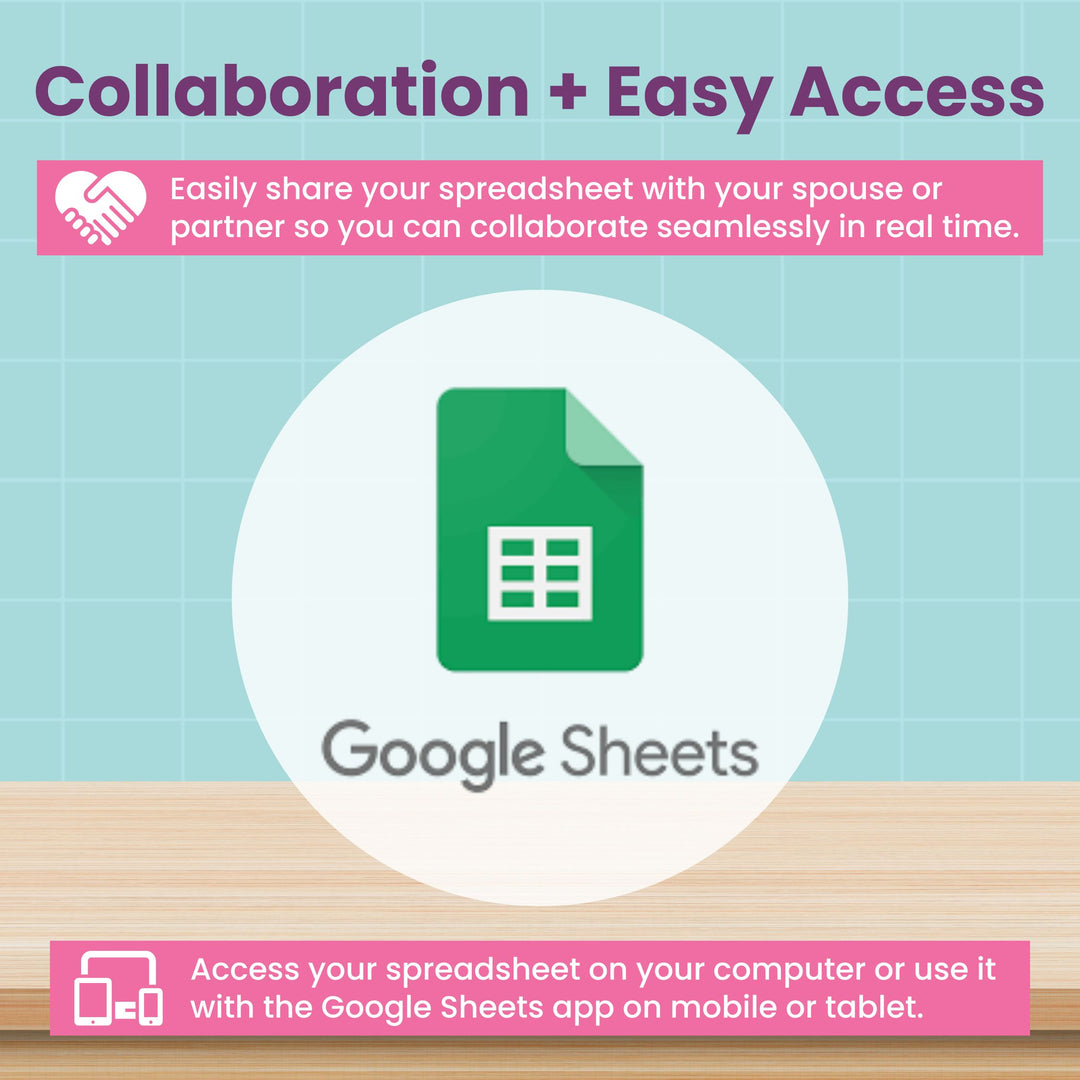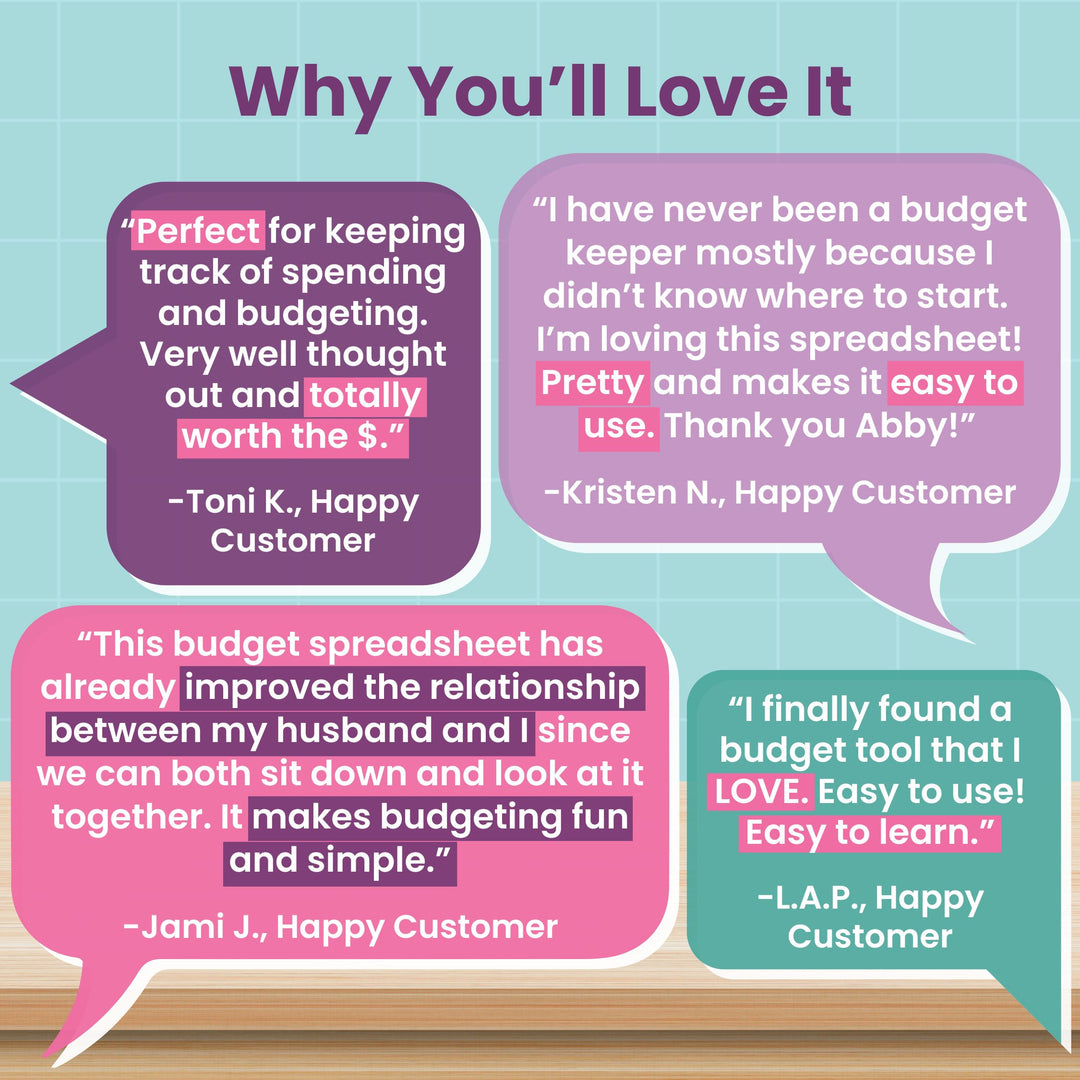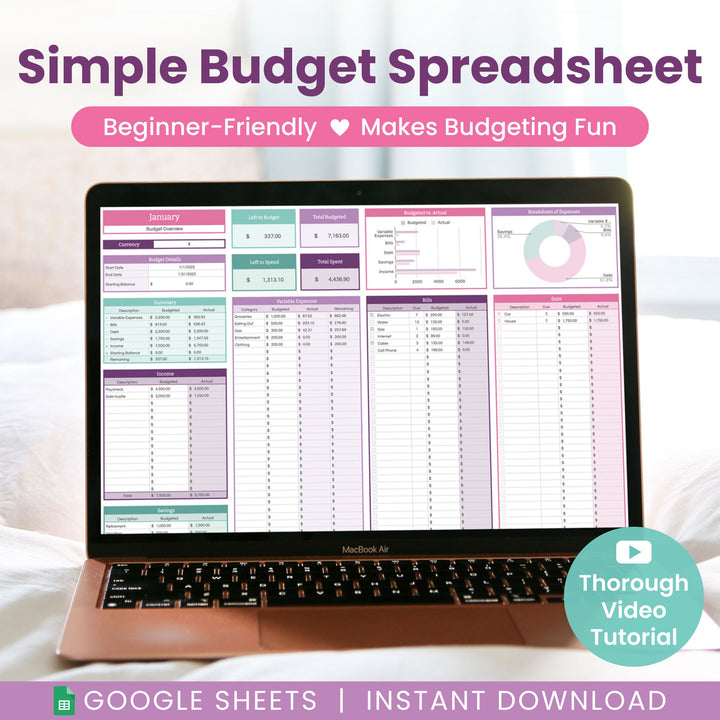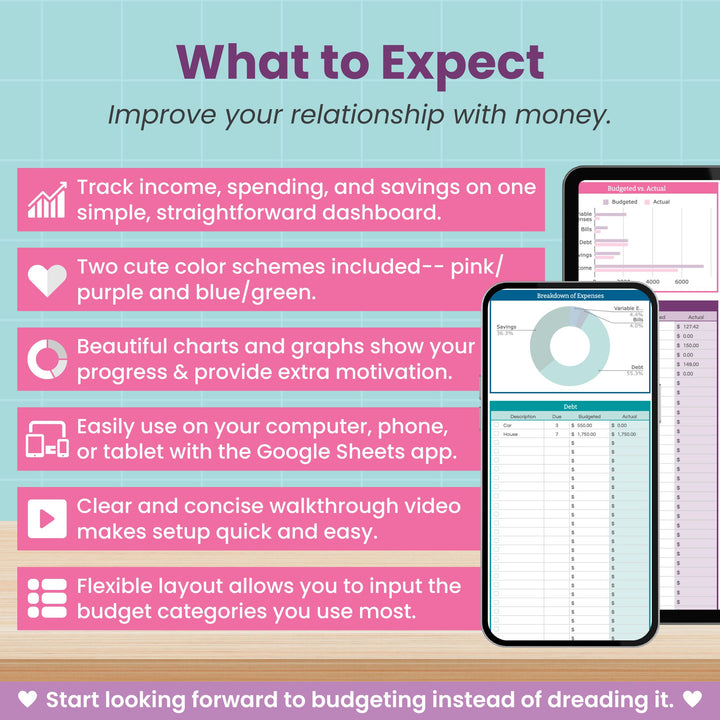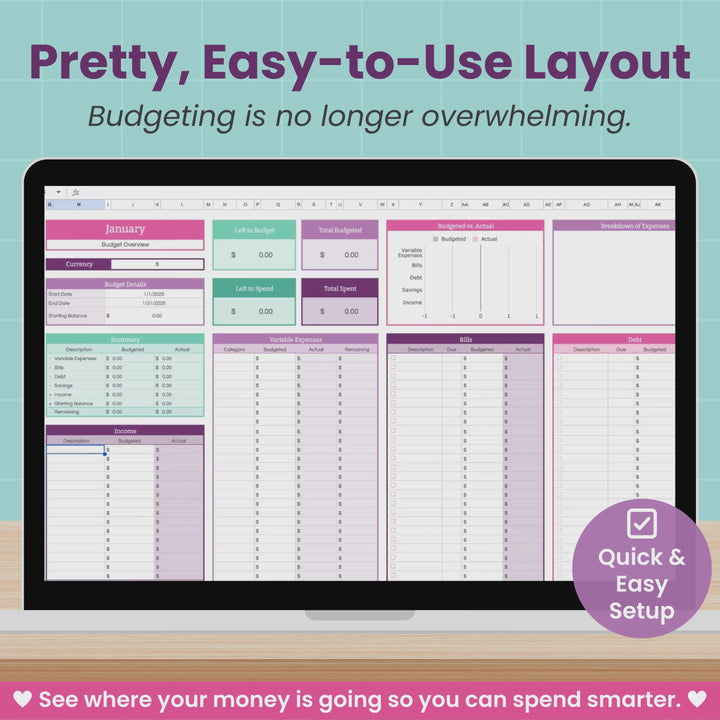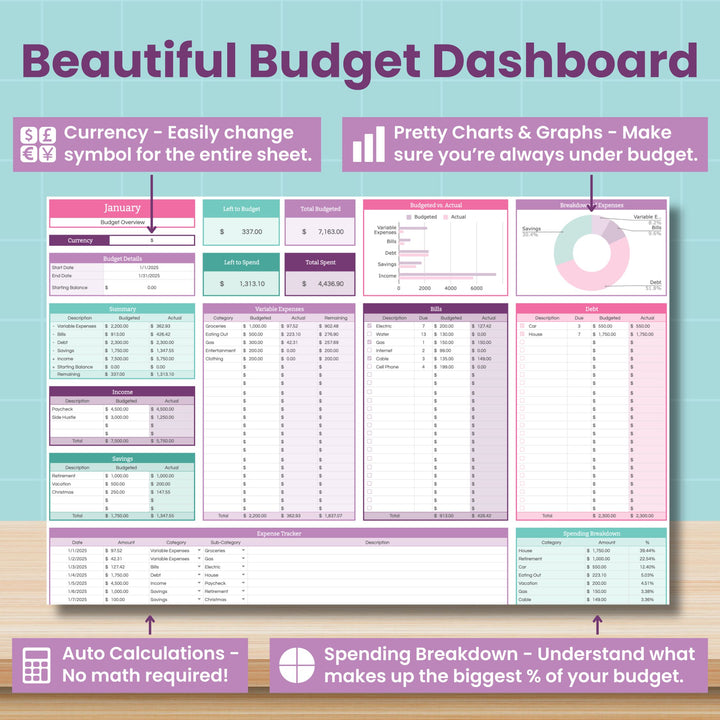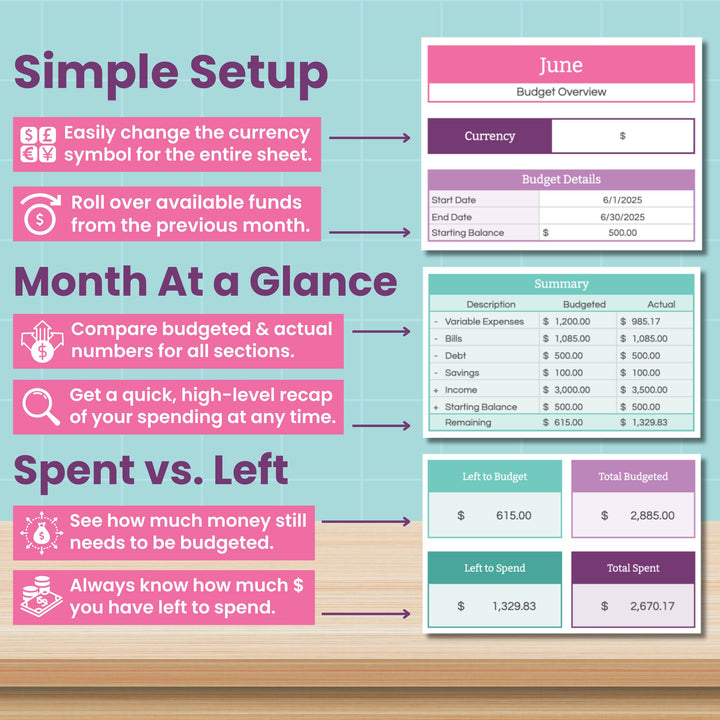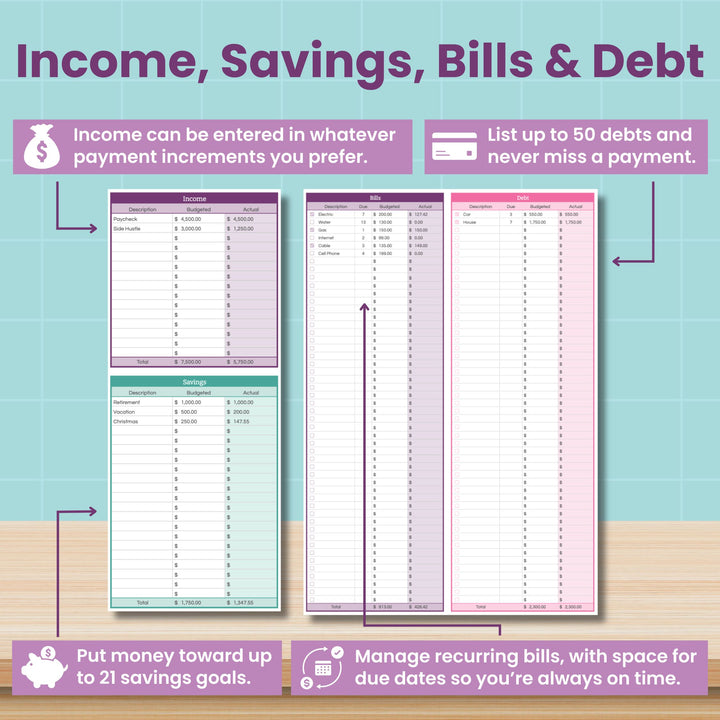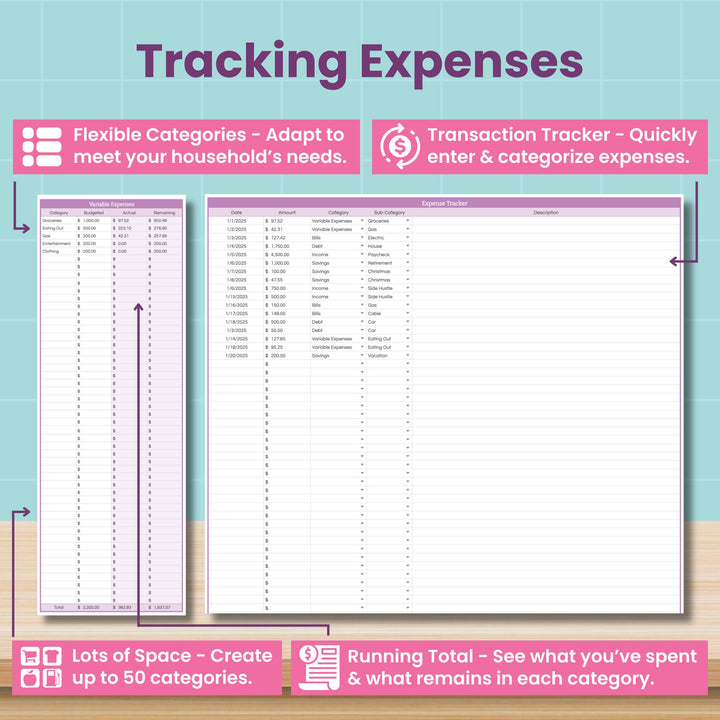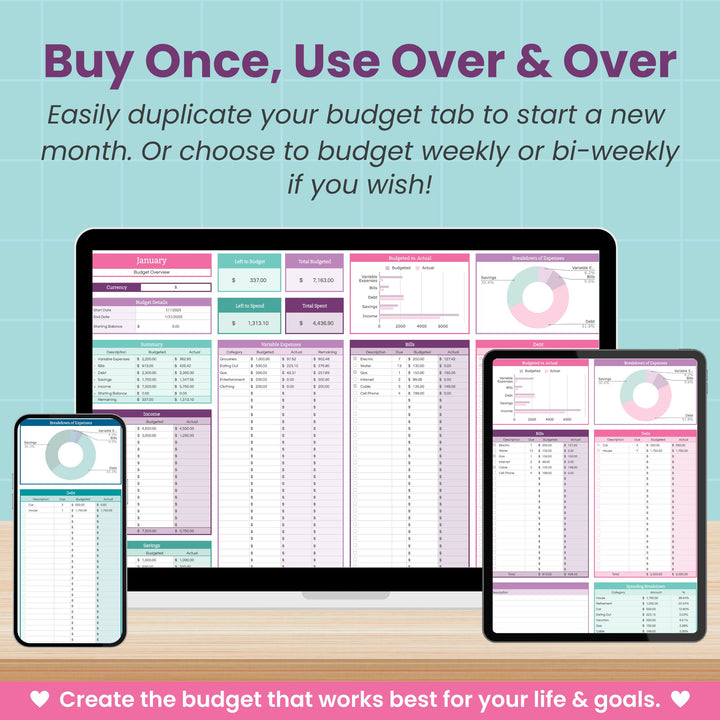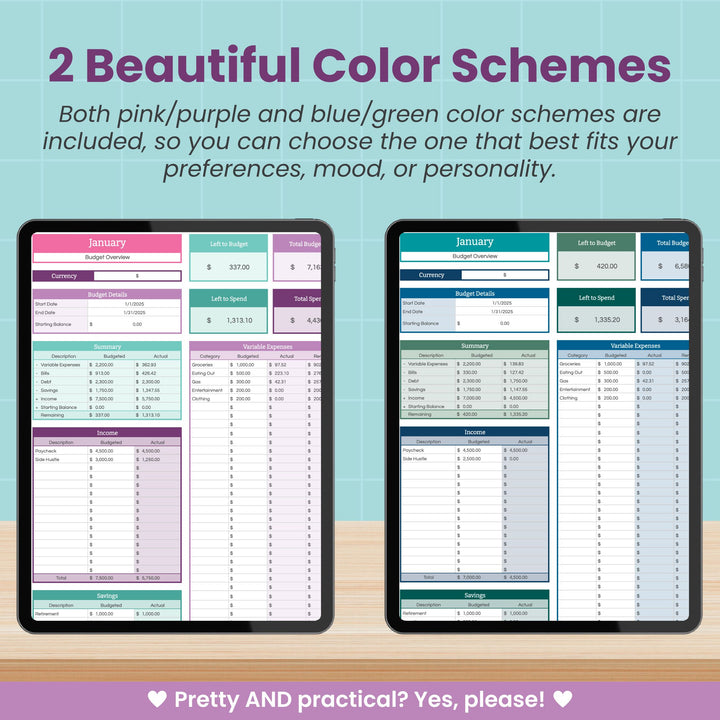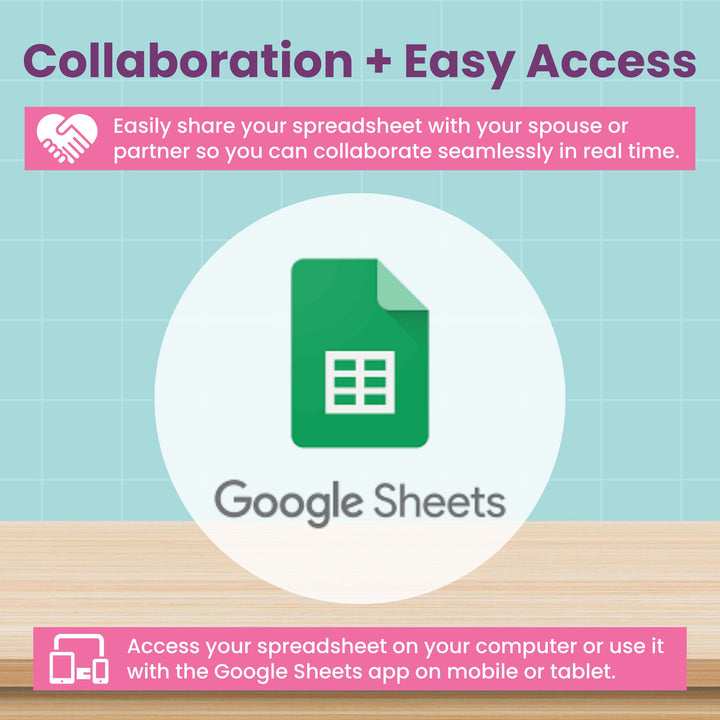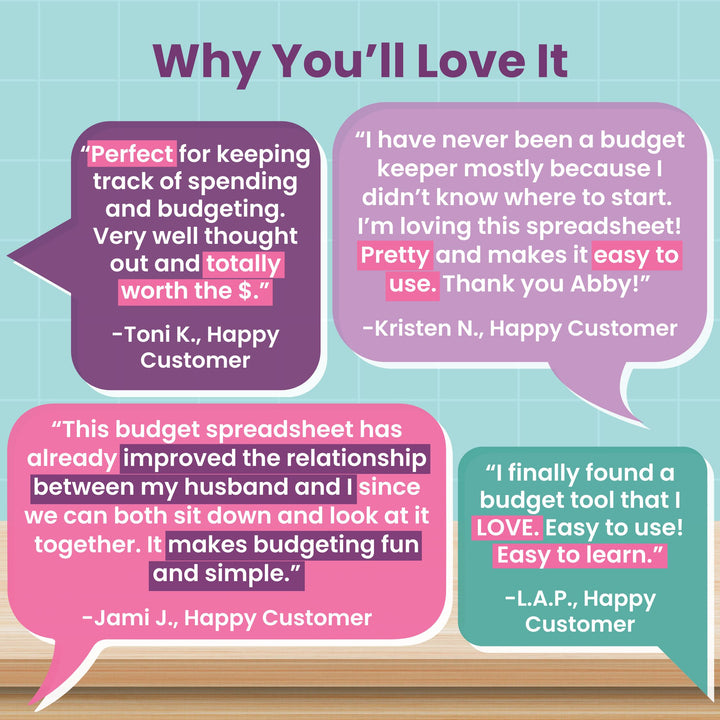How to Create a Monthly Budget
Learn how to create a monthly budget so you can be more intentional about how you spend your hard-earned money!

One of the most effective ways I've found to save more money and spend less is by tracking my spending with a monthly budget.
But creating a budget can feel intimidating at first, right?! We have all sorts of bills and transactions coming through each month, so how to we begin to make sense of them all?
In this post, I'm going to walk you through how to set up a basic monthly budget. And hopefully by the end, you will have the confidence you need to create your own budget so you can take control of your finances!
How to Budget Money for Beginners
The screenshot examples in this post are from our Monthly Budget Spreadsheet, which is a helpful (and fun!) tool to help you start tracking your spending. (It does all the math for you! ;) )
Step 1- Figure Out Your Net Income
No matter which tool you're using to track your budget, the first thing you'll want to do is figure out your net monthly income.
This won't be your full salary number. It's the amount you make minus taxes and other deductions. (If you don't know this number off hand, take a look at your previous pay stubs/paychecks.)
Our goal in this income section is to figure out how much money we have available to spend on bills and expenses throughout the month.
In the income section, you can record your net income, as well as any income you generate from side hustles or other various sources. If you are budgeting with a spouse or partner, record their income (and side hustles) as well.

What if my monthly income varies?
If you work on commission or have another job that involves variable income, it can be tricky to know what to record for your monthly income number.
To start, try using a fairly conservative ballpark amount for what you expect to bring in each month. If you budget for a few months and find that you are actually bringing in more than you planned, you can always raise the amount in the future.
It's usually more difficult to have to lower your income amount and figure out which categories to take money away from.
Step 2- Record recurring bills.
After you have your income numbers squared away, it's time to make a list of your recurring bills.
These are payments you make each month (or quarter or year) that are generally the same from month to month.
Here are some examples of categories you might have in the recurring bills section of your budget:
- Rent
- Health insurance
- Auto insurance
- Homeowners/renters insurance
- Life insurance
- Umbrella insurance
- Electric
- Gas
- Sewer
- Water
- Trash
- Cable
- Internet
- Phone
- Subscriptions
- Streaming services
- Gym membership
- Education
- Apps
- Patreon
- Newspapers/magazines/other media

If you're not quite sure what all bills you pay each month, pull up your previous bank statements and/or credit card statements. Looking back over the past few months of statements will give you a pretty good idea of what bills you are currently responsible for.
The items in this section are not things that will vary quite a bit from month to month, like groceries or gas for your car. Those types of expenses go in our next section...
Step 3- Create categories for variable expenses.
Now that our bills are all squared away, let's talk about some different categories for variable expenses.
Here are some examples...
- Groceries
- Household items
- Eating out
- Gas + car
- Clothing
- Entertainment
- Presents
- Child care
- Kids' activities
- Charitable giving
- Medical
- Travel
- Personal care
- Hobbies/fun money

You can have as many or as few variable expense categories as you want. Some people like to get really granular and have a ton of different variable categories so they can see exactly where their money is going.
Others may choose to go more broad and follow the 50/30/20 rule, which recommends that you spend 50% of your monthly income on needs, 30% of your monthly income on wants, and put 20% of your monthly income into some type of savings.
Our family falls somewhere in between. I break out our variable expenses into multiple categories, but I don't go super duper detailed and have tons and tons of categories to track.
You are free to do what works best for your personal situation. And if you start budgeting and realize that you would like to have a few more categories or that you want to combine a few categories so you have less to track, that's fine too! A budget is not set in stone.
Again, if you're not sure what categories you should create, take a look at your bank/credit card statements over the past few months. You will quickly start to notice patterns and see which variable budget categories you may need.
How much should I budget for each category?
If you've never tracked your spending before, it can be hard to know how much money to budget for each category.
If you want to have an accurate(ish) number right away, you can go back through your past bank/credit card statements and add up the amounts for each category.
A simpler option may be to not set budget amounts for the first month and simply commit to tracking your spending. At the end of the month, you'll be able to see how much money you've spent in each category and can use those numbers to set budget amounts moving forward.
Step 4- Plan out debt payments.
One of the big advantages to following a budget is that it can help free up more money to put toward our debts so we can pay them down faster.
Debts are things like...
- Mortgage
- Car payments
- Student loans
- Credit card debt
- Home equity loans/lines of credit
- Personal loans
- Medical bills
- Loans for electronics purchases

Debts are often recurring monthly bills as well, but I like to call them out in their own category because-- unlike a cell phone bill or gym membership-- we are usually paying interest on our debts.
Because of these interest payments, it can be beneficial to pay off our debt faster (in many situations) so that we can pay less interest.
If you'd like to learn more about strategies for paying down debt, I talk about the Debt Snowball Method and the Debt Avalanche Method in this post.
Step 5- Establish savings goals.
Another helpful category to build into our budget is savings.
Yes, it's important to pay for the things we need right now, but we will likely also have big expenditures that we need to make in the future.
If we can start putting away a little bit of money at a time for those expenses now, it will be a whole lot less stressful when the time comes to buy holiday gifts, purchase a new car, go on vacation, etc.
Here are some examples of categories you may want to have in the savings section of your budget... (You likely won't have all of these! This is an area where the priorities of each household vary widely.)
- Emergency fund
- Retirement
- Kids' college education
- Vacation
- Holidays or other gifts
- New car(s)
- Home downpayment
- Home repair fund
- Home renovation projects
- Car repair fund
- Back to school shopping
- Quarterly/yearly bills
- Medical/dental expenses
- Childcare
- Kids' sports, activities, and camps
- Pet expenses
- TVs, computers, or other electronics
- Wedding expenses
- New baby expenses

If you'd like to learn more about strategies for saving money, I have a more detailed post about sinking funds here.
Step 6- Start tracking your spending.
Now that you've listed out your budget categories for each section of your spending, it's time to get tracking!
Each time you pay a bill or make a purchase, add the amount to the applicable section of your budget.
Tracking your spending may feel tedious at first, but once you work it into your routine and make it a habit, it will start to feel like second nature.
Tracking is truly where the magic happens. Because I am entering each and every purchase our family makes throughout the month, I know exactly where our money is going.
I have caught mistakes when a company has billed us too much or has charged us twice. I always know if a bill has not gone through for some reason and can follow up with the company to make sure they received it.
Most importantly, because I (and the other members of my family) know that our spending is being tracked, it makes us much more aware of our purchases.
This causes us to be more intentional with how we spend our money, and we naturally spend less than we used to because we'd rather reach our money goals than buy something insignificant.

Decide on Your Budget Tracking Schedule
I enter our family's transactions into our budgeting spreadsheet every Friday. This allows me to keep tabs on our numbers throughout the month and give the other members of my family a heads up if we are getting close to reaching our budget in a certain area.
Other people may prefer to enter their transactions daily so they're only ever entering a few at a time.
Still others may choose to enter transactions every 3-4 days.
Whatever interval you choose, I encourage you to be consistent. I've found that it helps me stay consistent if I do my tracking in the same spot, at the same time of day each week.
Step 7- Tweak your budget as needed.
After you've tracked your spending for a few months, you may find that there are some categories where you're consistently over or under budget. If that's the case, don't be afraid to tweak your budget numbers!

It can be really disheartening to be over budget month after month. But it could be that the budget number you chose just may not be realistic for your household in this phase of your life. It may end up being less stressful for everyone if you simply raise the budget number.
On the other side of the spectrum, if you find you have leftover funds in a particular category month after month, that may be money that you can devote toward a tighter category or even to savings instead, allowing you to use your hard-earned cash more efficiently.
Budget Plan Template with Budget Example
If you could use some help organizing your budgeting thoughts, I pulled together a simple printable to help you jot down your categories for each section of your budget and brainstorm your initial budget amounts.
Along with a blank version of the printable for brainstorming, I've also included a filled out version of the printable so you can see a budget example if that would be helpful.
Please keep in mind that every single household's budget will be different. Where you live, the number of people in your household, personal needs and preferences, and job and life situation will drastically change the numbers people use for their budgeting categories.
What's most important is that you figure out the budget that works well for your unique situation (and the other members of your family, if applicable).
Grab the budget plan worksheet printable and budget example here.
How to Make a Monthly Budget: Final Thoughts
Creating a budget and tracking your spending is one of the most helpful things you can do to improve your financial picture.
When you know where your money is going, you can make smarter decisions about what to do with it.
Making a budget doesn't have to be scary. Simply follow the steps laid out in this post, and you will be well on your way to creating a healthier financial picture for yourself and your loved ones.
Your budget doesn't have to be perfect.
One last thing to keep in mind-- Your budget likely will not work out perfectly, and that's okay. Budgeting is about being more aware of your spending, having a clear view of your financial picture, and being intentional about your financial decisions. It's not about perfection!
Our family has had unexpected expenses pop up and months that didn't go as well as we had hoped. But because we knew our numbers and could make adjustments, none of those less-than-ideal situations ended up being catastrophic.

Budgeting gives you the knowledge you need to make smart decisions, rather than just hoping things will work out and panicking when they don't.
And the good news is that tracking your spending gets easier and easier over time! Be consistent, and you will see those positive changes you've been hoping for.
Happy budgeting!





